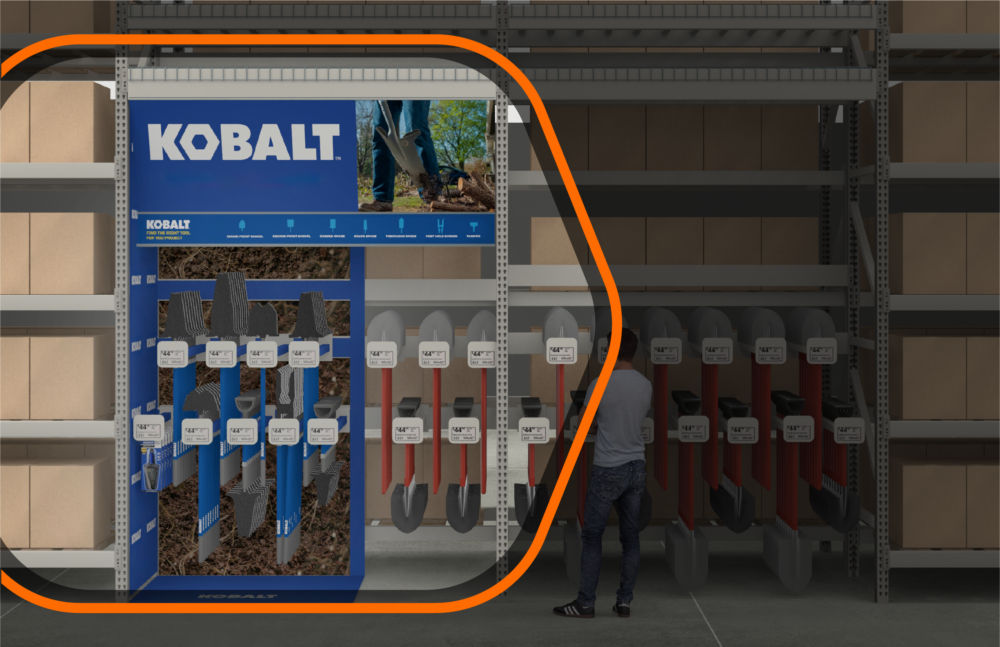
In the dynamic world of home improvement retail, making a mark in big-box retailers like The Home Depot or Lowe’s is more than just an opportunity – it’s a transformative journey for your brand. We know just how important it is to nail your product line review (PLR), but moreover, successfully navigating a PLR is crucial for securing that coveted shelf space. It requires more than just a good product – it demands an understanding of how your product can become an integral part of the retailer’s vision. These tips combine expert strategies with practical ideas to help you excel in your next PLR, enhancing your brand’s presence and securing a lasting impact in the market.
1. Understanding Your Product and Business
Begin your PLR journey by thoroughly understanding your product and your business’s strengths, weaknesses and unique selling points. How does your product fit into the retailer’s lineup? Whether it’s a revolutionary tool that changes the way DIY enthusiasts work or an ecofriendly paint that’s a game-changer in sustainable home improvements, your narrative should not only highlight these features, but also resonate with the retailer’s values and market position. Remember, the more in tune you are with your product’s unique aspects and potential market impact, the more convincing your pitch will be to the retailer.
2. Storytelling Backed by Data
Combine the power of storytelling with the persuasiveness of data. Use demographics, psychographics and market trends to craft a narrative that shows the depth of your market understanding. This approach not only turns your product from a ‘nice-to-have’ to a ‘must-have’ on the retailer’s shelves, but also builds a compelling case for its appeal to both the retailer and the end customer. The data can also help educate new buyers, both in the conference room and in the showroom. Stories that are anchored in solid data captivate and lend credibility to your product, showcasing its potential for success in a competitive market.
3. Knowing Both Your Audiences
Understanding both your direct (retailer) and indirect (consumer) audiences is vital for a successful PLR. Who will buy your product at the retailer’s stores, and what does the retailer prioritize? Tailoring your pitch to address the unique needs and preferences of each retailer and avoiding a one-size-fits-all approach is essential. Don’t bring your Lowe’s-specific presentation, with quarter pallet designs and planograms specific to Lowe’s stores, to your Home Depot PLR. Your presentation isn’t just about showing why your product is great; it’s about demonstrating its relevance and appeal to the specific clientele of each retailer, making your product an irresistible addition to their product lineup.
4. The Pain Points of Your Retailer
Identifying and addressing the retailer’s challenges is crucial. Demonstrate how your product not only aligns with their objectives, but also provides solutions to specific pain points, such as a demand for more sustainable products or budget-friendly options. By understanding these pain points and positioning your product as the solution, you create a compelling argument for its inclusion in the retailer’s product lineup. This approach showcases your product’s value and establishes your brand as a thoughtful, problem-solving partner in the eyes of the retailer.
5. Defining Success for Your Team
Before entering the PLR, it’s important to define what success looks like for your team. Are you aiming for a trial in select stores, a full-scale rollout or prominent shelf placement? Setting specific, measurable goals will guide your presentation and negotiation strategy. Additionally, having a clear understanding of your objectives will help you articulate your vision more effectively to the retailer, demonstrating your strategic planning and long-term commitment to the partnership.
Bonus Tip: Being Prepared to Listen
In the PLR, every piece of feedback is invaluable. Even if it’s challenging, take the feedback as a treasure-trove of insights to refine your strategy. The willingness to listen, adapt and evolve is what can transform a single successful PLR into a long-term, fruitful relationship with the retailer. Remember, the experts you are presenting to have a wealth of retail knowledge as well. Their insights can help you fine-tune your product and strategy, aligning them more closely with market demands and retailer expectations.
Mastering PLRs in the home improvement retail sector involves a blend of product and market understanding, storytelling backed by data, audience insights, problem-solving, goal setting and an open, receptive attitude. By implementing these strategies, your brand can navigate the competitive landscape and secure a prominent place in the retail world. The journey through a PLR is not just about selling a product; it’s about building a story, understanding needs, solving problems, and forging lasting partnerships that benefit both your brand and the retailer.
For more insights on effective business strategies, check out our Porchlight Insights. Learn from our past articles and stay informed on the latest trends shaping the industry.